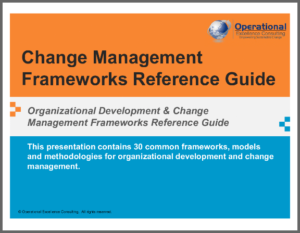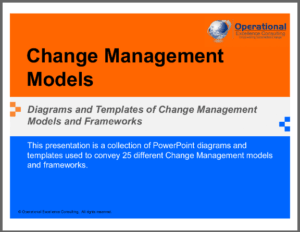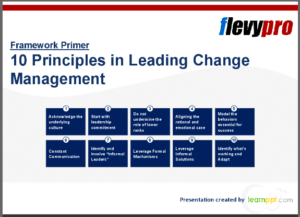‘Nudging’ is a technique that can drastically improve results. This post bridges the gap between the theory and practice. It looks at what Nudge Theory and Cognitive Bias are, and how you can leverage them for better performance in strategy and project management.
What Is Nudge Theory?
 ‘Nudging’ has been around for a long time – probably dating back to the origins of human nature!
‘Nudging’ has been around for a long time – probably dating back to the origins of human nature!
More recently, Nudge Theory has been formalized in modern times by Richard Thaler and Cass Sunstein, scholars at the University of Chicago, in their book, “Nudge: Improving Decisions About Health, Wealth, and Happiness” (2008).
Nudge Theory is a sort of ‘choice architecture’ – a way of structuring choices for people.
Here is the definition of a ‘Nudge’ in the words of Thaler and Sunstein:
“A nudge, as we will use the term, is any aspect of the choice architecture that alters people’s behavior in a predictable way without forbidding any options or significantly changing their economic incentives. To count as a mere nudge, the intervention must be easy and cheap to avoid. Nudges are not mandates. Putting fruit at eye level counts as a nudge. Banning junk food does not.”
If you have 3 minutes, watch “Richard Thaler – Nudge: an Overview” (yes that’s Richard Thaler, one of the U. of Chicago authors of the Nudge book cited above):
What are some common examples of Nudge Theory in action?
- A food stand places fruit items near the register as a healthy snack option. Studies have shown that this has increased the amount of healthy food consumed by patrons. At the same time, it is common to find food stands – and the same goes for super markets – where the shelves closest to checkout are lined with candy!
- A company provides a retirement savings program which is optional to employees. However, employees are automatically enrolled and need to make a conscious decision to not enroll, if that is their choice – rather than the reverse. Studies have shown that this increases participation and actual savings rates for retirement – something which is good for both employees and the company.
- Marketing is a place where nudging takes place all the time! Marketing itself is about getting attention – and presenting to persuade. And the internet is the ultimate venue for marketing. You cannot surf the internet without getting nudged almost immediately to make a decision about something.
Many nudging techniques are well-intentioned, some are self-serving, and others in between. Nudging definitely requires consideration from an ethical perspective.
Nudge Theory 101
According to Daniel Kahneman, a Nobel Laureate, people make decisions in alignment with two simple and distinct systems:
- Automatic System – Decisions made without much thinking – almost automatically. People benefit because it is fast…but it leaves them highly susceptible to outside influence.
- Reflective System – Decisions made with reasoning, thinking, and applying rationality. People pay a price up front because it is slow and reflective…but they can benefit because it is more intentional as it takes into account the person’s explicit goals.
Note that we need to exert effort to use the Reflective System. In areas where we are less familiar, we may have to fight off influences to keep the focus on rationality and our goals. However, often when facing high complexity or time constraints, we may simply revert to the Automatic System.
Note also that, once we master and understand something in the Reflective System domain, we tend to shift it over to the Automatic System for future decisions.
In short, people seek rules of thumb to make decision-making easier. Nudges can make decisions easier, and thus play into our natural human tendencies.
But there is a price to pay, as decisions using the Automatic System may not get us where we want to go – they tend to be sub optimal. And the Automatic System tends to support habitual behavior, which by nature is resistant to change.
Cognitive Bias and Decision Making
 Nudging can be very effective when it plays on our typical cognitive weaknesses – or cognitive biases.
Nudging can be very effective when it plays on our typical cognitive weaknesses – or cognitive biases.
To make the point, let’s looks at some cognitive biases and how they can be used to nudge people in a particular direction.
- Anchoring – Basing decisions about what you don’t know on things you do know. It seems natural, but businesses often present an option first that is vastly overpriced in order to ‘soften’ you up for a lower price that you might have previously thought was high.
- Availability Heuristic – We tend to rely too much on immediately available information. That may steer us toward solutions we are familiar with, and away from better solutions where we may have a preconceived notion that is not based in fact.
- Representative Heuristic – People are challenged by the idea of randomness – or the idea that there is not a pattern to something. We naturally look for a pattern, as it gives us a greater feeling of control. However, when we lean on a perceived pattern for making a decision, but there really is not a valid pattern, our decision can in reality be baseless.
- Status Quo Bias – This is a bias that frequently impacts change management initiatives. The default is to do the same thing you have been doing – the status quo – versus doing something different, which in the case of change is more likely to produce better results.
- Herd Mentality – Suppose there is a dance at the local community center, and you are considering going. Your decision may be influenced by the fact that 4 out of 5 people you spoke with are going, so you decide to go. You are being influenced by herd mentality – a form of peer pressure.
- State of Arousal – This is a fancy way of thinking about your mood. We are probably more likely to buy something, say yes, or take an action if we are in a good mood. Think about the music that plays in stores; it’s designed to nudge us into a ‘buying mood’.
Nudge theory taps into cognitive biases such as those above. It taps into an innate human characteristic that tends to favor the Automatic Systems as opposed to the Reflective System. In a sense, it is an inherent laziness, or desire to avoid extra work, that we humans possess.
Try and give your ideas a firm grounding by ‘getting them down on paper’.
Nudge Theory and Strategy
There are many lessons in Nudge Theory that can apply to strategy. However, many nudging techniques are actually more tactical in nature.
One of the biggest concerns in strategy is to think about how a situation will naturally unfold. For example, you may consider that a market will naturally unfold where there are economies of scale and scope, or where there are network effects, or where there is primarily competition by differentiation.
—————————————-
I recommend these strategy resources on FlevyPro (paid links):
| Change Management Frameworks Reference Guide 402-slide PowerPoint deck $179.00 |
Change Management Models 136-slide PowerPoint deck $59.00 |

|

|
| 10 Principles in Leading Change Management 17-slide PowerPoint deck $25.00 |
Lean Change Management 21-slide PowerPoint deck $25.00 |
 |
 |
—————————————-
These are natural things, based in part on human instincts, but also crowd psychology, personal motivation, and a host of other factors. In many ways, businesses focus on factors like this in the process of making strategic business decisions. In addition, what a business is or can be good at is an insight with strategic impact – and will tell them where to nudge.
Consider the Automatic vs Reflective Systems for making decisions from a strategic viewpoint. Consider that early in the evolution of any industry, it seems that everything is up for grabs. People are open, at that point, to be influenced. They are open to receiving information, and are willing to put in the effort to make a decision on the Reflective side.
However, once they have made that initial decision to go a particular direction, people as a whole will switch to the Automatic System. They will come to favor certain brands, develop preferred locations, and become comfortable with certain ways of doing business. Switching costs come into play.
Thinking in terms of Nudge Theory can provide strategic insights that can help achieve and benefit from things such as branding, economies of scale, and developing an effective value chain. These things can all help to build a moat that provides long term strategic advantage.
Nudge Theory and Project Management
Nudge theory provides another framework of knowledge that can help project managers to perform their jobs better. Here are some areas where project managers can apply Nudge Theory:
—————————————-
I recommend these PM templates (paid link):

—————————————-
- Teams – People on project teams often need to be nudged. It’s a matter of using a motivational strategy that forces people to do something or makes it their choice. For example, in a situation of uncertainty about a way forward, you might work with a teammate to devise an experiment – based on a hypothesis – to move forward using the PDCA method. The nudge was in the direction of action to answer questions that were impeding a decision.
- Stakeholders – Many decisions require support and buy-in from stakeholders. As project leader, you may know what the answer is – or at least some pieces of the answer. The way in which you present the alternatives to the stakeholders, or your customers, provides nudges that can steer the outcome one way or another.
- Change initiatives – Changes are fraught with decisions – at the management level, about internal and external matters, and by individuals. In leading a change initiative, you need to make it your business to try to understand the alternatives that are swimming around in people’s heads. You need to speak to them – and empower yourself to nudge people in the right direction.
Nudge Theory provides a framework and tool set that can empower you to more effectively shape positive outcomes for projects and programs.
One more thing: whenever possible, use nudges in a deliberate manner – where you can measure the results. If you can measure the results of using a nudge vs not using one – that’s powerful!
Pros and Cons of Nudge Theory
 The are pros and cons to Nudge Theory – mainly related to where you can use it effectively and the scope of problems that it can solve.
The are pros and cons to Nudge Theory – mainly related to where you can use it effectively and the scope of problems that it can solve.
Pros:
- Effective technique for producing change in behavior
- Effective for producing results in near term
- Lends itself well to performance metrics – comparing results before and after
Cons:
- Not an end-to-end change management model or framework
- Can be viewed as ‘parental’ – walking the line between control and well-intentioned guidance
Use it as a complementary technique to any formal change model, such as:
- John Kotter Change Management Model – 8 step prescriptive model that provides a strong framework that has been used to implement change in many organizations
- William Bridges Transition Model – Uniquely embraces the process of personal transition – through Endings, Neutral Zone, and New Beginnings – where Nudges can help
- Kurt Lewin Change Management Model – Known for its simplicity, it segments an organizational change process into three basic steps: Unfreeze, Change, and Refreeze
It is also important to take responsibility for ensuring that the decision is that of the individual.
Conclusion and Further Resources
This post has examined the ins and outs of Nudge Theory.
Where have – or can you – use nudges to improve outcomes in your daily work?
For a good program management perspective on Nudge Theory, I recommend “Nudge Theory Explained with Examples”, a 12-minute video produced by Expert Program Management (EPM):
